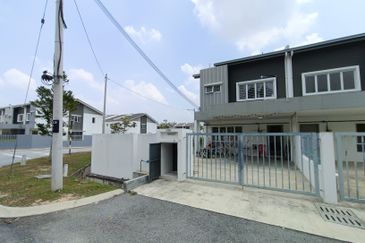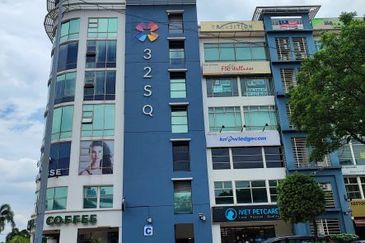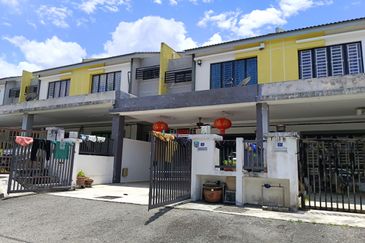KUALA LUMPUR: Over the last 63 years, the world commemorated Town Planning Day every Nov 8 in recognition of town planners and their contribution to planning our homes and communities. The idea of a commemorative date for town planning was first suggested by the late Professor Carlos Maria Delia Paolera from Buenos Aires University in Argentina, and it is now a permanent fixture in the International Society of City and Regional Planners' calendar.
In Malaysia, town planners have been commemorating the day since 1988, led by the Town and Country Planning Department with the cooperation of similar groups such as the Malaysian Town Planning Authority, Malaysia Institute of Planners (MIP) and the Malaysian Town and Country Planning Officers' Association (PERSADA).
As for town planners here, the commemorative date also serves as a platform to share information and publicize the profession’s many contributions to the community. This year, the department adopted the ‘Green Town, Happy Community’ theme to emphasize how town planning assures the public enjoys more environmental-friendly and people-friendly living spaces.
Combining seminars, discussions and exhibitions concerned with town planning, this year's celebration was held at a hotel here. Of note, this year's celebration witnessed former prime minister Tun Dr
Mahathir Mohamad being appointed the Patron of Town Planning.
DR M's contrubution in physical development
According to Housing and Local Government Minister Datuk Seri Chor Chee Heung, Dr Mahathir's appointment provided recognition for his support for town planning and development during his 22-year tenure.
Among the best-planned townships that were the brainchild of Dr Mahathir were Putrajaya and Cyberjaya, where the town planning was ahead of its time and beyond the expectations of Malaysians during those years, according to officials.
“Though he is no longer at the helm, I hope that Tun Dr Mahathir will continue contributing ideas, especially through his writings in blogs and articles, his views in the print and electronic media, and his presence at public events,” added Chor.
While speaking during the commemoration, Dr Mahathir noted that town planning of today has to meet the future needs of the Malaysian public.
Long term planning
"In Malaysia, we plan ahead. We plan three years ahead, five years, 10 years and even 100 years.
My gratitude goes to the services of the town planners who have been helping the government with their far sighted ideas that have enabled us to plan brilliantly for the future," he said. Asked about the role of today’s town planners whose jobs are considered increasingly challenging, Dr Mahathir said that despite current obstacles, appropriate town planning will continue.
The garden city concept
Meanwhile, the garden city concept remains alive today, even though it was first introduced by the British Colonial government, noted Town and Country Planning Department's Deputy Director General Kamalruddin Shamsudin.
"Town and country planning was established by the British in 1921, with Kuala Kubu Baharu being the first garden city, built in 1924," explained Kamalruddin, who has been a town planner for 34 years.
Town planning was given recognition through the Town and Country Planning Act 1976, and further amended in 1995 to encompass the environmental well-being, topography, landscape and preservation of trees.
He added that the Town and Country Planning Department has been working with local governments to prepare for the post-carbon era when fossil fuel is to be replaced with cleaner energy sources.
This is also in line with the government's commitment to reduce the nation’s carbon footprint by 40 per cent by 2020.
Kamalruddin added that the department seeks to create green neighbourhoods based upon four principles. "First, give priority to natural design, lighting and ventilation. Second, adopt the 3R (Reduce, Reuse, Recycle) concept. Third, be smart in using energy and last, encourage green technology applications, such as solar energy," he explained.
MURNINETS
Malaysian Urban Rural National Indicators Network on Sustainable Development (MURNInets) is a networking programme created to evaluate the sustainability of townships.
Developed by the department, the programme was begun in 2002 and implemented in six towns and cities - Kuantan, Georgetown, Johor Baharu, Kuching, Batu Pahat and Pasir Mas.
Today, it has been continually fine-tuned and is ready to be put in place in eight more local governments - North Kuching City Council, Kota Kinabalu City Council, Shah Alam City Council, Miri City Council, Putrajaya Corporation, Alor Gajah Town Council, Sandakan Town Council and Kuala Pilah District Council.
One of the yardsticks employed as part of MURNInets is the 'Happiness Index' that evaluates the public’s satisfaction of the townships and is being implemented by the department at 151 participating local governments.
"What is interesting is that the local governments in non-urban areas recorded high scores in the studies," noted Dr Dahlia Rosly, the department's Deputy Director General (Development). Dr Dahlia noted that the index would serve as guideline for town planners in understanding the ever-changing needs of the public. -- Bernama
TOP PICKS BY EDGEPROP

Pearl Villa Townhouse
Bandar Saujana Putra, Selangor

Laman Haris @ Eco Grandeur
Bandar Puncak Alam, Selangor

Jalan Klang Lama
Jalan Klang Lama (Old Klang Road), Kuala Lumpur

Bandar Kinrara 2
Bandar Kinrara Puchong, Selangor

Bandar Kinrara 2
Bandar Kinrara Puchong, Selangor




















